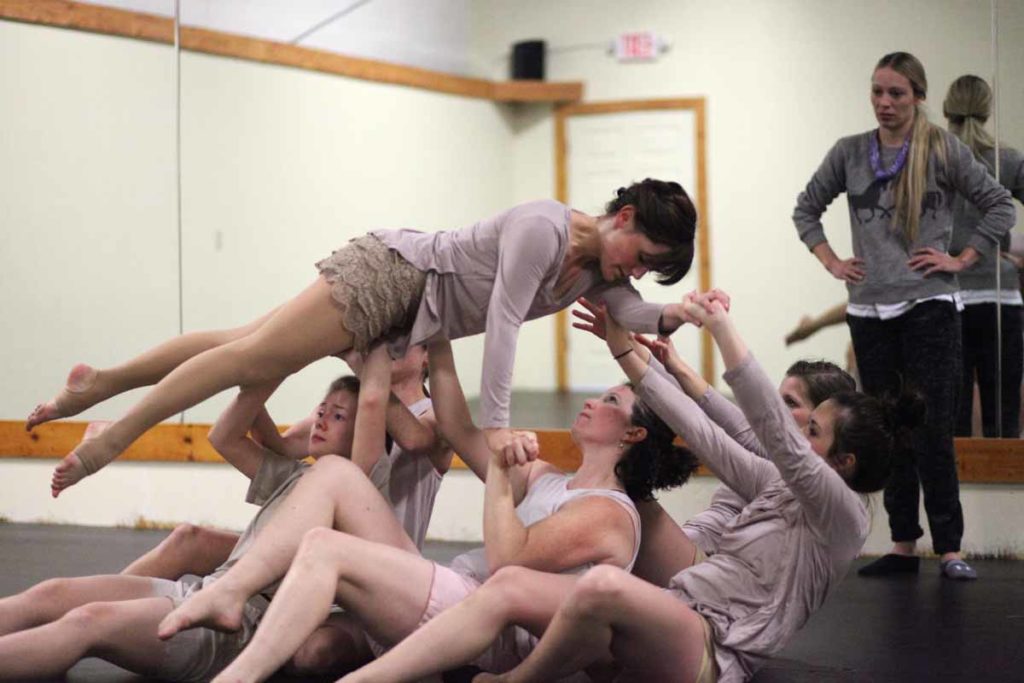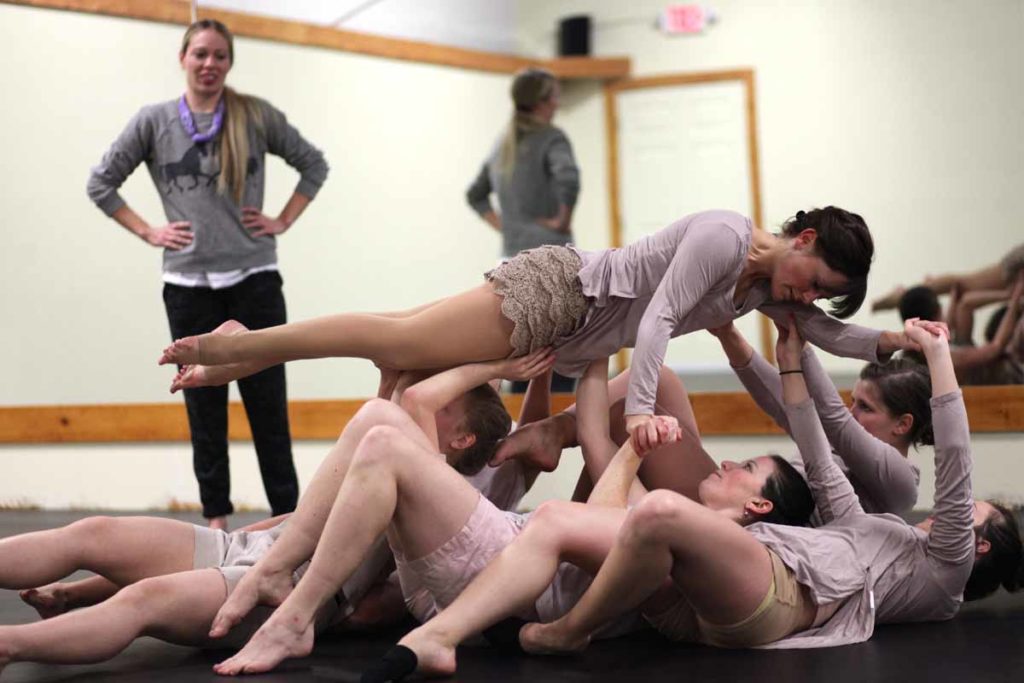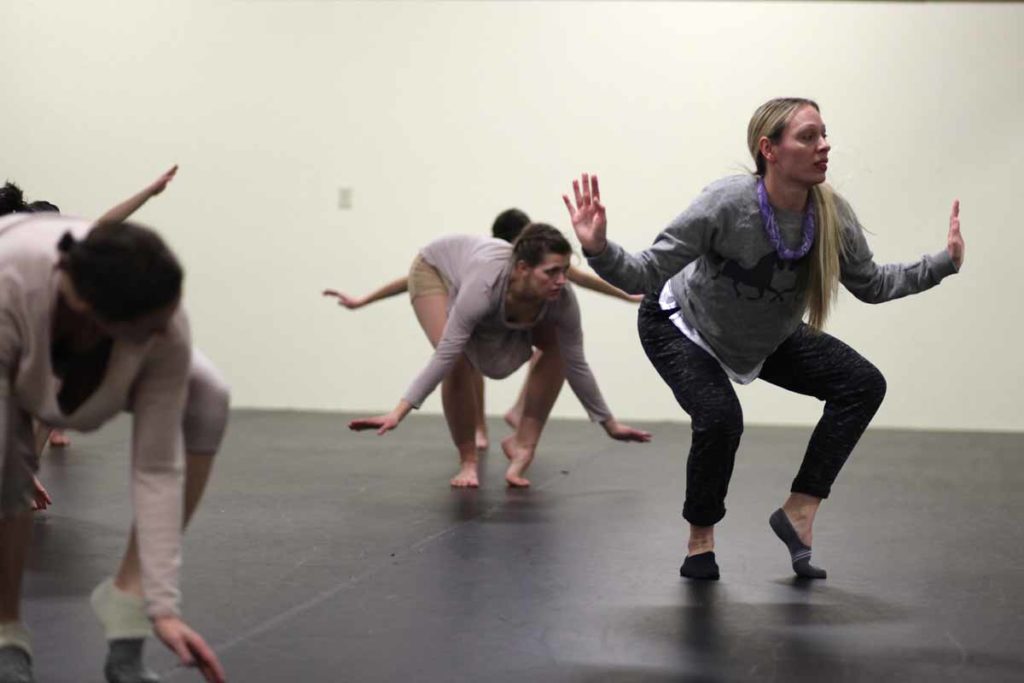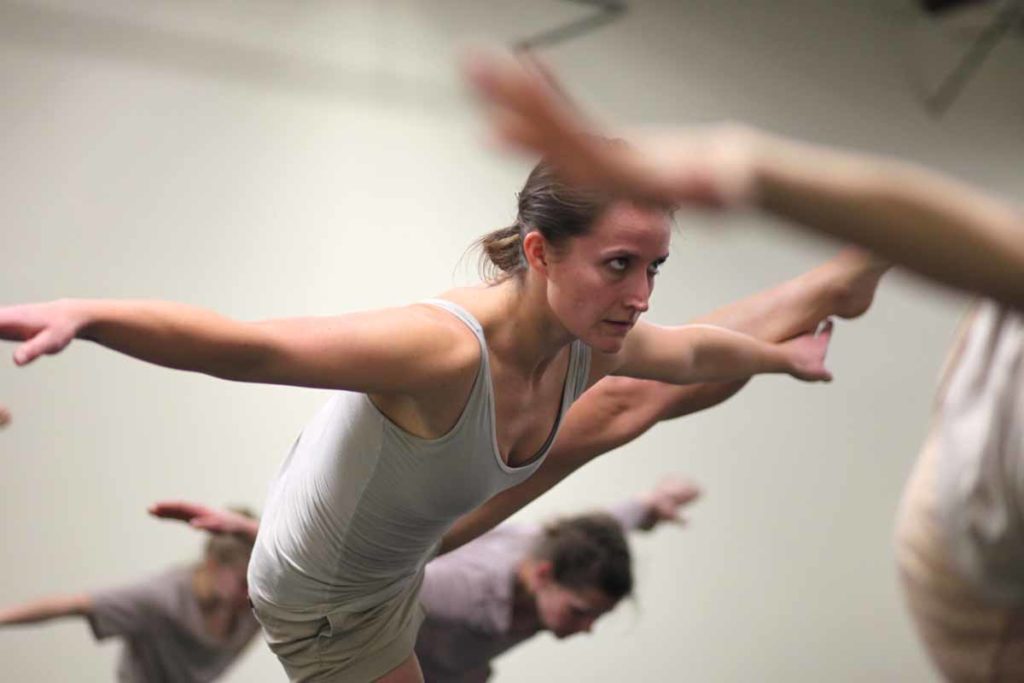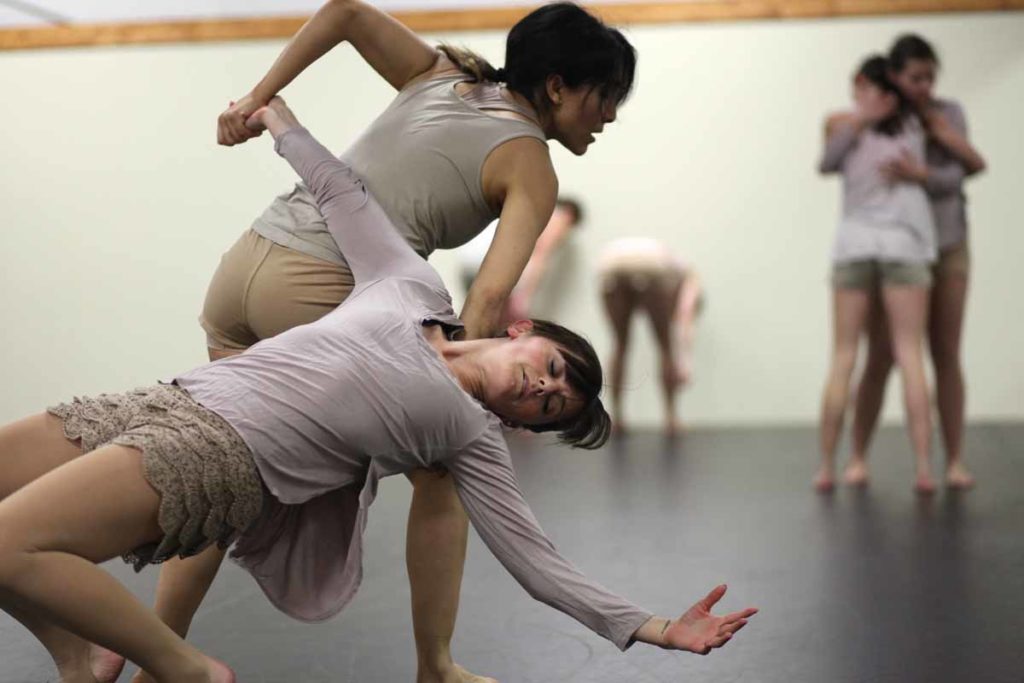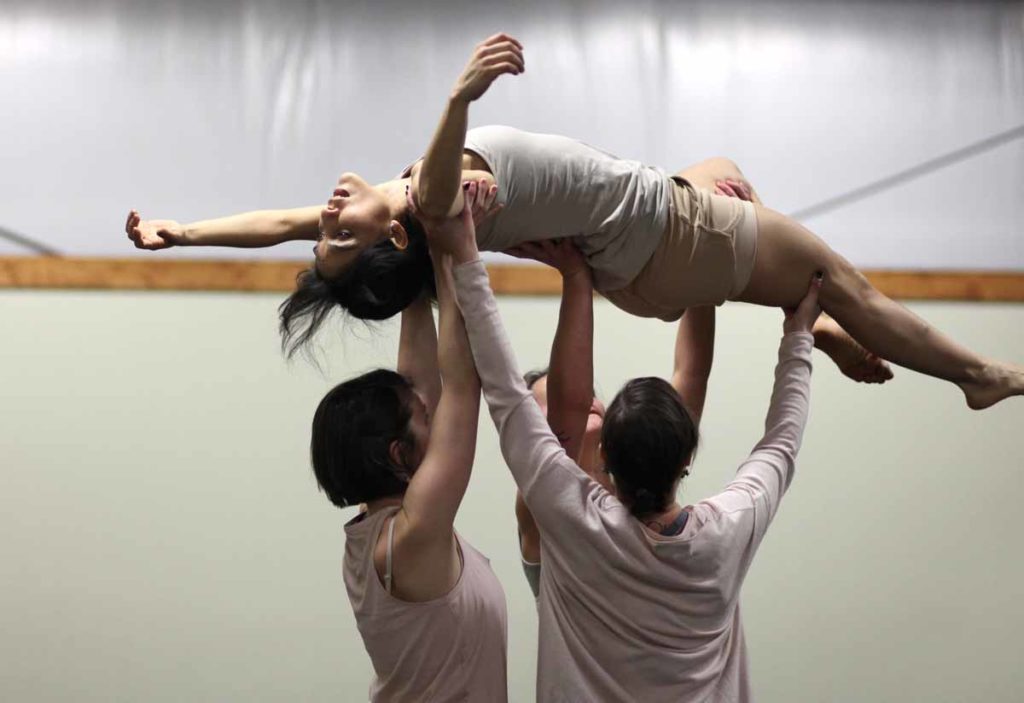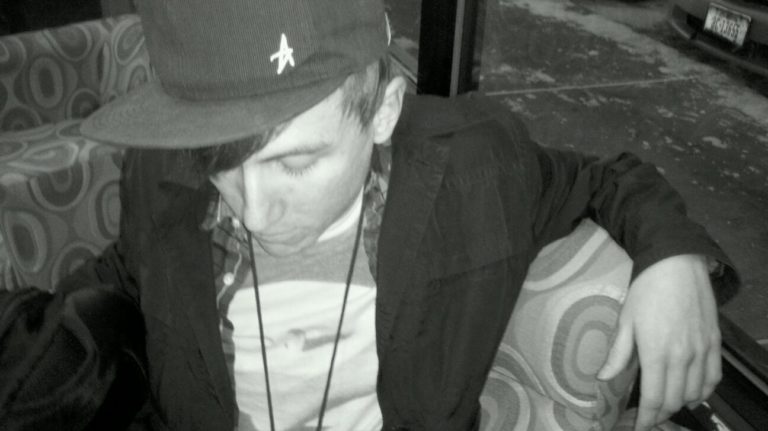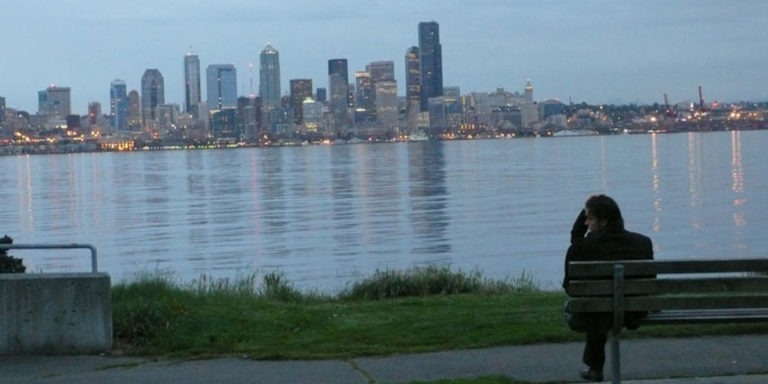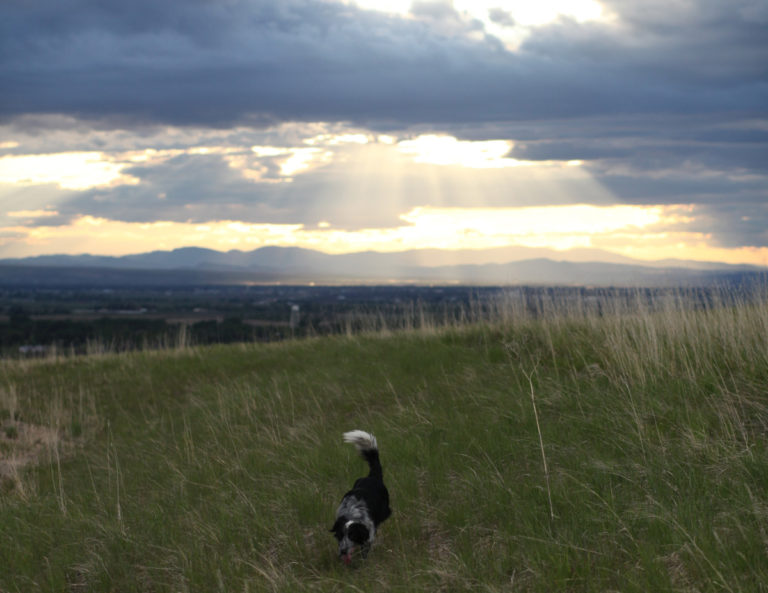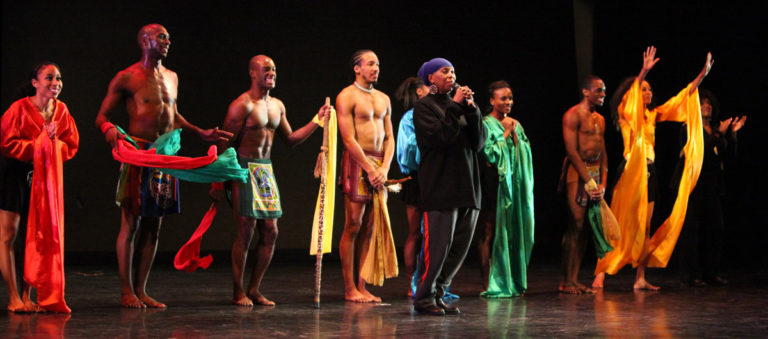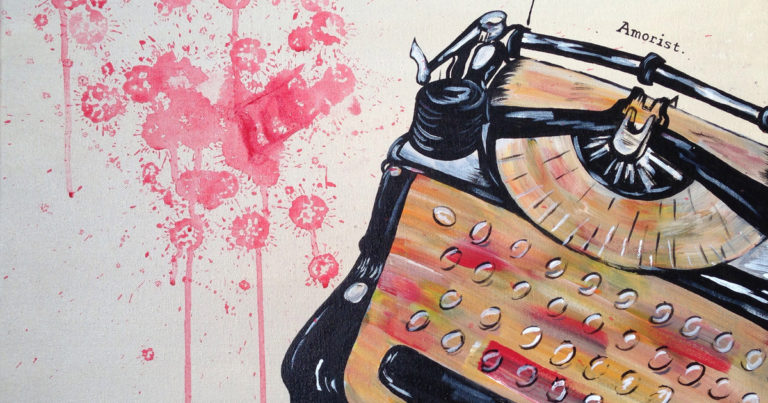Trust on display
For Ricki Feeley, dance is personal. She groups movement into phrases the way a writer tells a story. “Most of movement I create is based on how I am feeling,” she said. “It’s a sympathetic response.”
An advanced modern technical dancer and founder of Terpsichore Dance Company of Montana, Feeley makes it easy to get lost in dance. She immerses her audience in the story that body can create, inspired by her own life experiences.
Feeley creates solitude and a sense of aloneness in her work, but it’s never long-lived. Brought to life by Terpsichore dancers, her dances erupt in mass movement, telling the story of connection that is required of dancers moving together and falling completely into one another.
This Saturday (March 5), members of Terpsichore take to the Babcock stage to perform Feeley’s vision, a series of choreographed pieces on loss and grief, of celebration and joy, and of fantasy and dreams that took more than six months to perfect. Audiences have two chances to catch the show at the Babcock Theatre during a 1 p.m. matinee and an evening performance at 7:30 p.m.
For many members, they’ve been working on these movements since last summer, meeting weekly and as often as many as five days a week leading up to the annual performance.
“It looks a little frantic right now,” Feeley commented during one of their final rehearsals. “It seems to fall apart before it comes together.” Rhythmically, the dancers rehearse, counting their steps out loud. Each movement is a number among the whirl of churning feet, flicking ankles, and nude legs.
Observing as dancers continue to run the routine, Feeley can see what happens as a whole. She follows each gesture, witnessing what the dancers can’t see when they’re in the midst—the collective whole of the piece, the audience’s view.
Whenever possible, dancers look to the large mirror that runs the entirety of the studio’s back wall. Watching the synchronicity of their lines, it’s as though they’re looking out to an imagined audience.
A dancer in the front, Maribel Schaff, reaches to another dancer, Morgan Shaw, and rolls her into a spin as though Shaw were weightless. Turning her like a floating wheel, Schaff seems to be completely unaware of gravity.
To have such connection and the ability to manipulate another person, Schaff said it comes down to trust. “You have to completely support your weight and give up to the other person. You have to trust each other a lot.”
Kate Blakeslee, who joined Terpischore in 2012, said she’s driven to participate because of what she’s able to create with her fellow dancers.
“I think creating something with a group of people is one of the most powerful things we can do with our lives, and this is my opportunity to do that,” Blakeslee said.
Terpsichore’s eighth production in six years will feature 12 dancers, including Feeley. Many are original members. What was once just a hobby for these women has grown into a nonprofit dance company staging elaborate, extensive dances that take half the year to finalize.
There are no paychecks. These dancers come together to create without financial compensation. Though their time is donated, each dancer signs a yearly contract committing to the process.
“I didn’t foresee any of this,” said Feeley, who founded Terpsichore in Missoula while studying dance at Montana State University. She obtained a BFA in dance with choreography and performance as her emphasis.
In Missoula, Feeley staged many shows as part of her dance major. When she relocated to Billings, she started an adult dance class. This collective of like-minded dancers were interested in performing for an audience, so Feeley thought, “Let’s do a little show.”
Terpsichore members practice at Montana Dance Center located on Daniel Street. The center, which opened in January after relocating from Moore Lane, was once an old garage. Garage walls and cement floors were converted to dancing studios with sprung flooring and a “marley” dance covering flown in from California, which gives the floor its spring.
Many of Terpsichore’s members teach at the center and get together after lessons to run through their pieces. The space is provided for Terpsichore to rehearse at no charge. Here, dancers have the room they need to prep for the stage.
Such space is necessary for Terpsichore pieces, constructed with expansiveness and a freedom of movement.
“I want it to be real,” Feeley said. “I have a huge appreciation for ballet, but it was all smoke in mirrors. You couldn’t move the way you felt, but instead had to do it same way as the person next to you.”
Feeley’s choreography has flow. It’s not rigid and formulaic; rather it is raw and real. Like water, it’s smooth and glossy, yet it contains great power. From movement to movement, there’s a sense that chaos could happen at any moment, yet each position creates a peaceful calm before the next.
When choreographing this year’s show, Feeley wanted to convey the way bodies move and feel. She improvised many of the pieces, evolving movement with fellow dancers to construct dance with authentic movement.
“When you try to chorographic (a dance) on your own, and set it on your own, and then come in and teach it, you put such a constriction on your expression,” Feeley said. “With Terpsichore, I can create movement on the spot without having to think too much about it. It’s been a beautiful evolvement.”
Directing 11 women in such expansive, impactful dances isn’t easy, and as the main chorographer, Feeley is in a constant leadership role. “I’m sure it gets tiring, me critiquing people all the time,” she said. “But I always treat people with kindness and respect, and the girls have such good attitudes.” There’s trust behind each movement, a sense that each dancer is looking out for the next.
“Dancers have to trust each other implicitly,” said Krista Pasini, one of the original members of the company. “As dancers, you are paint on a canvas. You are (the choreographer’s) artwork. You are going to get molded or lifted, or have an armpit in your face.”
Armpits included, the many shapes and bends of Terpsichore dancers portray beauty and strength in the female form. Each dancer’s body is a skyscraper of graceful power, from richly thick thighs to slender legs, from stout or long torsos to the limbs long.
Watching rehearsal, it feels as though the dancers could levitate. Their arms descend—timed to music—and rise again as a bird flapping. Melting, each dancer drops to the ground, and upon rising, their heads the last to arrive, they appear like warriors. Dropping their thighs parallel to the ground, they hover their arms skyward.
Moving with impactful music is a fundamental part of Terpsichore’s performances, yet some of the most compelling parts of a Terpsichore piece is created in silence, where the only sounds in the theater are of breath and body—the inhale and exhale of movement, the sound of joints and the give of the floor.
“I love to hear dancer’s breath,” Feeley said. “I tell my dancer’s not to worry about hiding it. Let me hear how the lungs get dispersed. Everyone appreciates it.”
It’s common when watching a Feeley creation to hold your own breath. There’s a feeling of anxiousness following each gesture. In movement, you sense your own longing and loss, but also a collective joy and exuberance when watching the dancers interact.
In each turn of the dance, you’re part of a greater adventure. Trust is on display. As each phrase of dance passes, you’ll find yourself silently cheering on the dancers. You’ll celebrate with them, imagining yourself in the story.
